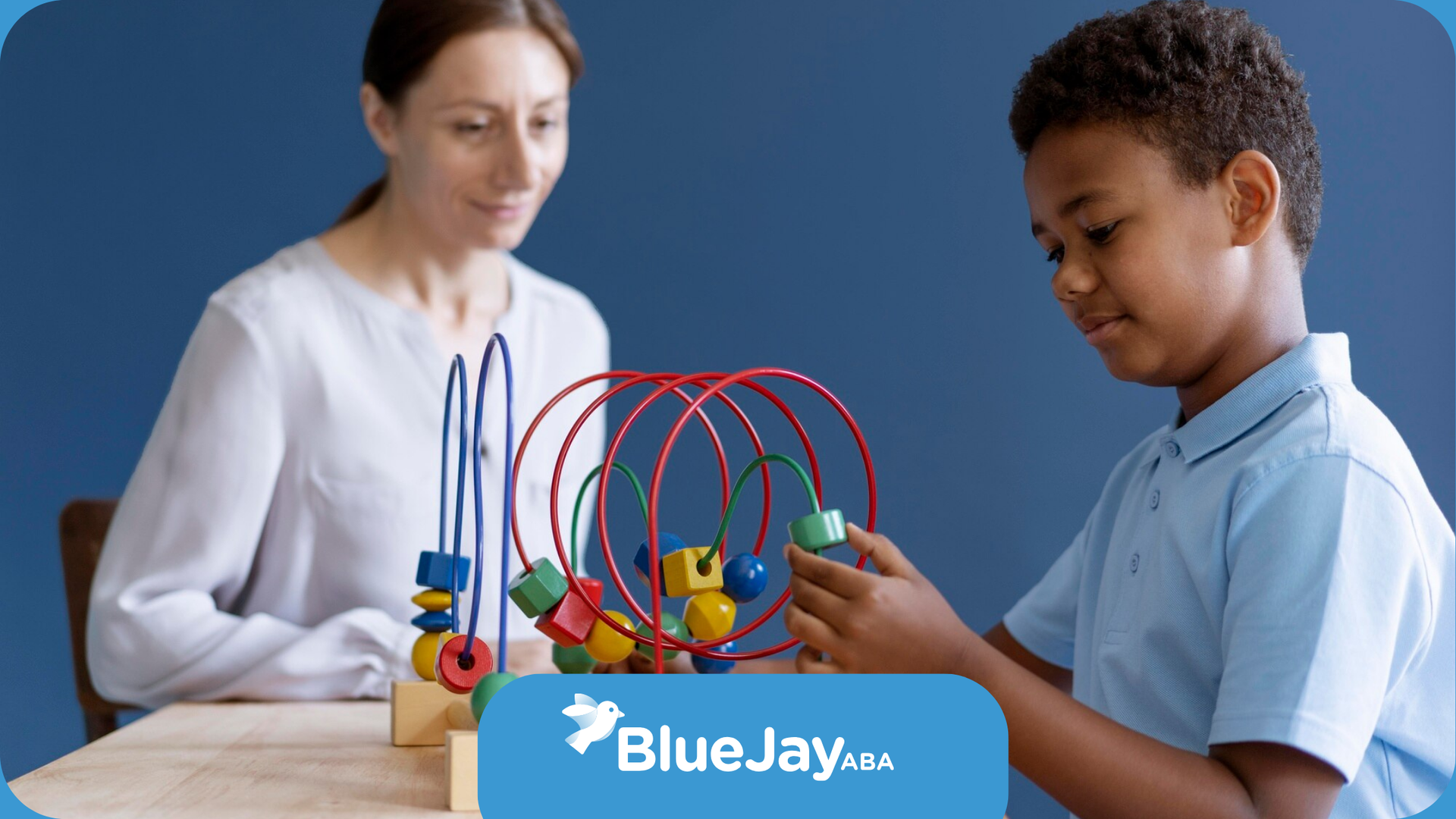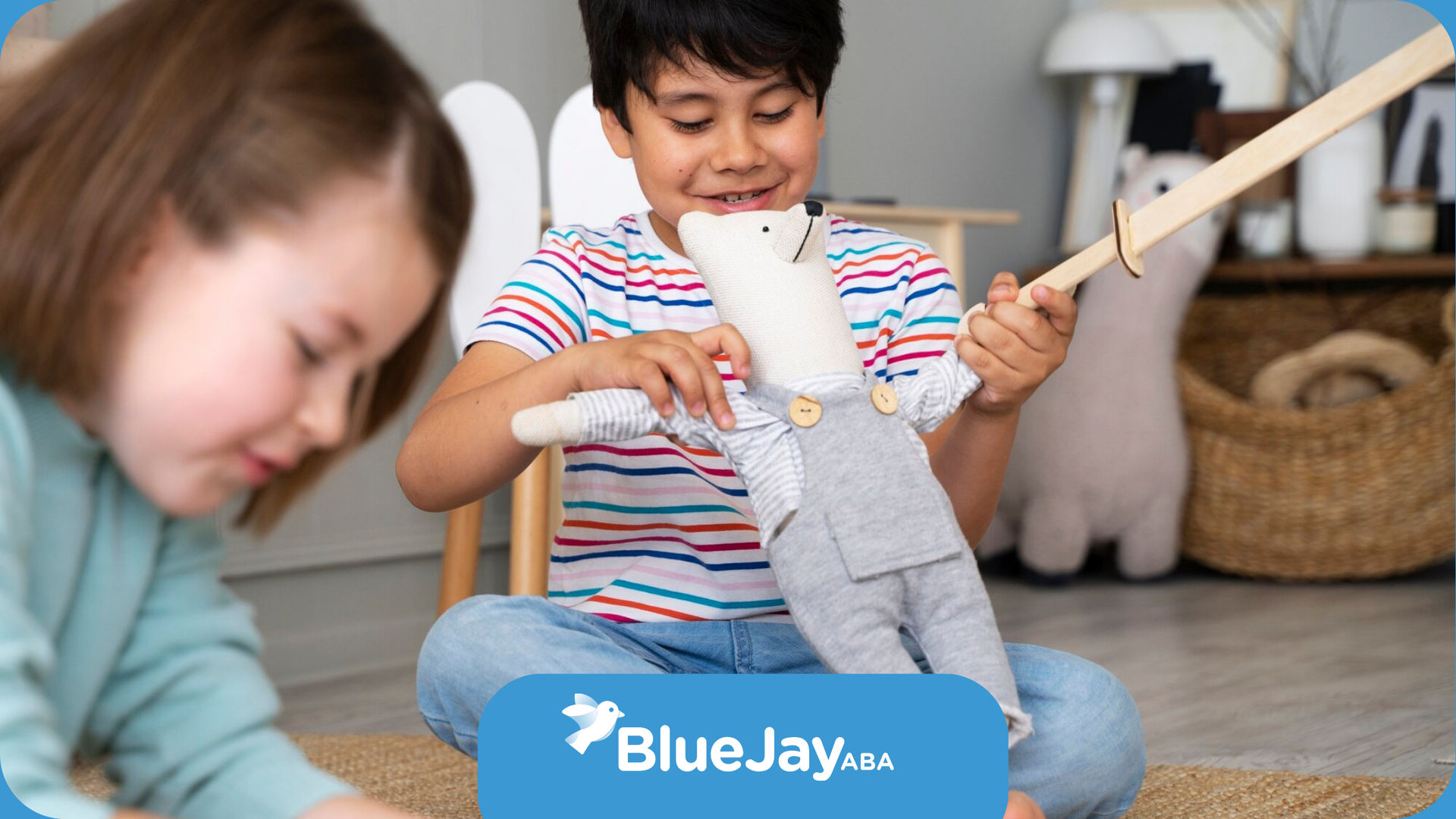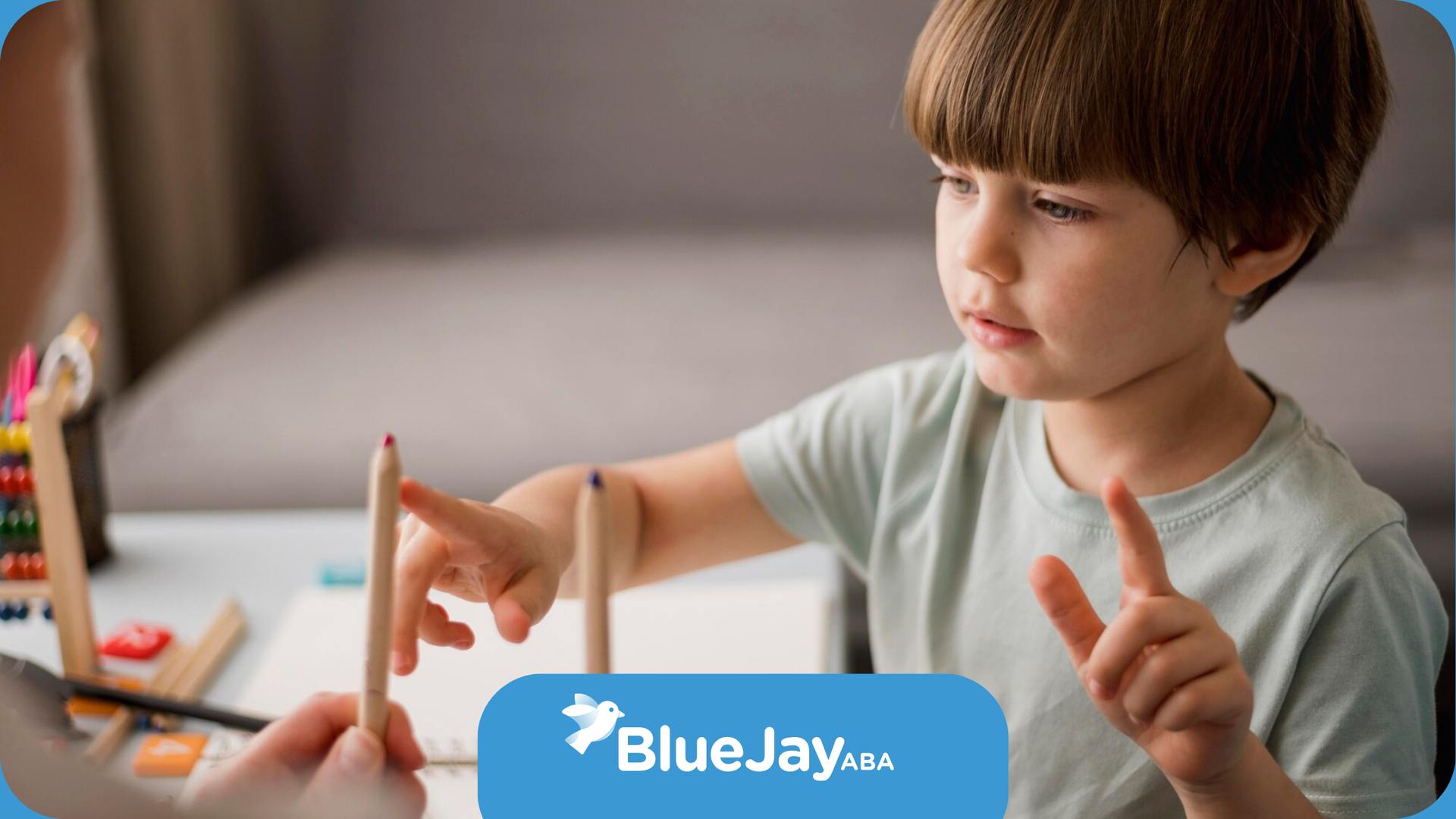Understanding Discrete Trial Training for Autism
This blog post looks at discrete trial training (DTT). It is a good teaching method used in applied behavior analysis (ABA) for people with autism. DTT takes complex skills and breaks them into smaller steps. Each step is taught one at a time. It also uses positive reinforcement to help with learning. We will look at the main ideas of DTT, how it works in autism therapy, and how it helps create good results.
Exploring the Basics of Discrete Trial Training (DTT)
Exploring the basics of discrete trial training (DTT) means taking skills and breaking them down into smaller steps. This provides a good teaching method. DTT is based on Applied Behavior Analysis (ABA). It focuses on getting the correct answers by using positive reinforcement. Collecting data is very important to keep track of progress. This is especially true for autistic children. DTT is often used for early childhood intervention. It helps in areas such as communication and academic skills. By setting up training sessions in a controlled setting, DTT helps children on the autism spectrum to develop skills and achieve positive outcomes.
Defining DTT and Its Role in Autism Therapy
Discrete trial training (DTT) is a special teaching method used in applied behavior analysis (ABA). It breaks down complex skills into smaller steps. Each step is taught one after the other.
The main idea behind DTT is reinforcement. When a person shows a desired behavior, they get positive reinforcement. This can be praise, tokens, or fun activities, which help make the behavior happen more often. DTT clearly shows information and gives immediate feedback. This makes it a great learning space for people with autism spectrum disorder (ASD).
DTT is proven to work well in autism therapy. It provides a clear framework for teaching many skills, such as communication, social skills, self-help, and academic skills.
The Core Principles of Applied Behavior Analysis (ABA) in DTT
In discrete trial training (DTT), the main ideas of Applied Behavior Analysis (ABA) are very important. ABA looks at how to break down complex behaviors into smaller steps. This helps children with autism spectrum disorder learn new skills. By using positive reinforcement strategies, ABA rewards correct answers. For wrong answers, it provides structured prompting. This way, skill development can improve. Using ABA principles in DTT makes sure teaching sessions meet individual needs. This promotes effective learning opportunities in a safe and organized setting.
Key Components of Discrete Trial Training
Discrete trial training (DTT) uses a clear, step-by-step way to teach new skills. This method takes complex tasks and splits them into smaller parts. This makes learning easier for people with autism.
Each part is taught one at a time, and they practice it many times until they master it. Then, they move on to the next part. This helps build a strong base for their learning.
Structuring Sessions: Steps and Techniques
Discrete trial training sessions have a clear structure. This structure helps the learner by providing consistency and predictability. Sessions usually happen in quiet places with few distractions, often at a table where the therapist sits across from the child.
Here is a typical structure for discrete trial teaching:
- Instruction: The therapist gives a clear instruction about the skill to learn.
- Prompt: If needed, the therapist uses a prompt, like speaking or showing, to guide the learner's response.
- Response: The learner tries to complete the task and responds to the instruction.
- Consequence: The therapist gives feedback based on the learner's response. Correct answers get positive reinforcement, and incorrect ones receive feedback to improve.
- Data Collection: The therapist writes down the learner’s responses. This helps track progress and make informed decisions about teaching.
The ABCs of DTT: Antecedent, Behavior, Consequence
Central to discrete trial training is the understanding of the "ABCs" of behavior: Antecedent, Behavior, and Consequence.
- Antecedent: This refers to the instruction or cue given by the therapist to elicit a specific behavior.
- Behavior: The behavior is the learner's response to the antecedent or instruction.
Consequence: The consequence refers to what happens immediately after the learner's behavior, either reinforcement to increase the likelihood of the behavior occurring again, or corrective feedback if the behavior is incorrect.
| Antecedent | Behavior | Consequence |
|---|---|---|
| "Touch your nose." | The learner touches their nose. | Therapist says, "Good job!" and gives a sticker. |
| "What color is this?" (Holding up a red block) | The learner remains silent. | Therapist provides a verbal prompt: "Red." |
This structured approach ensures a consistent learning experience and enables therapists to analyze the effectiveness of their teaching strategies.
Evaluating the Effectiveness of DTT for Autism
Discrete trial training (DTT) has been studied a lot and is known for helping people with autism. Many studies in respected journals like the Journal of Applied Behavior Analysis show that DTT has great effects on many skills.
These studies show strong proof that when DTT is done properly, it helps people on the autism spectrum. They see big improvements in communication, social skills, school work, and daily living activities.
Academic and Behavioral Improvements Through DTT
Discrete trial training (DTT) is very effective at helping people with autism make positive changes in their learning and behavior. In classrooms, DTT helps students learn important skills like reading, writing, and math. It does this by breaking down tough ideas into smaller, easier steps.
DTT also helps with behavior problems often linked to autism. Behavior analysts can use DTT to reduce unwanted actions like tantrums, aggression, or other repetitive actions. At the same time, it promotes good behaviors like focusing on tasks, following directions, and being social with others.
The clear structure of DTT, along with the use of reinforcement and practice, helps therapists build a supportive learning space. This setup encourages skill development and helps decrease behavior issues.
Case Studies and Research Outcomes
The success of discrete trial training (DTT) is backed by strong research studies and many real-life cases. These case studies show how individuals with autism have improved in different areas with DTT help.
These stories often show big improvements in communication skills, social interactions, and everyday behaviors. For example, one case study in the Journal of Applied Behavior Analysis featured a young child with autism. After a lot of DTT, the child went from not talking to using full sentences. The child attended a regular classroom and made meaningful connections with other kids.
These research findings and real-life stories reinforce DTT as a strong, research-based method for helping people on the autism spectrum.
Practical Applications of DTT
Discrete trial training (DTT) is not just for therapy rooms. It can be used in many everyday situations. Parents, caregivers, and teachers can use DTT ideas in daily routines to help kids learn skills and handle tough behaviors.
For example, DTT can help a child learn to get dressed by themselves or boost their communication skills at mealtime. It gives a flexible way to encourage independence and support good behavior changes.
Tailoring DTT to Individual Needs
While discrete trial training (DTT) has a set structure, it is important to understand that it does not work the same for everyone. The great thing about DTT is how it can change to fit the needs of each child with autism spectrum disorders.
Therapists should deeply assess each child. This helps to find their strengths, challenges, and how they learn best. This personal touch can help adjust the tasks' difficulty, the kind and amount of rewards, and the ways to offer help during each session.
By looking at each child’s likes and learning styles, therapists can create a DTT program. This makes the training more engaging and motivating, leading to better success for every child.
Incorporating Reinforcement Strategies
Positive reinforcement is very important in discrete trial training. It helps to motivate children and makes learning easier. When a child gives the correct response in a DTT trial, it's important to quickly provide a reward that they enjoy.
Rewards can be things like verbal praise, high-fives, stickers, small toys, or fun activities. Therapists and caregivers should find different types of rewards that excite the child and change them often to keep things fresh.
Also, as the child gets better at the skills, the way of giving rewards can change. At first, rewards can be given for every correct response. Then, we can give rewards for just some correct responses. This helps keep the skills for a long time.
Conclusion
In conclusion, Discrete Trial Training (DTT) is a clear and helpful method for autism therapy. It uses ideas from Applied Behavior Analysis (ABA) and focuses on individual needs. By using rewards in training, DTT helps improve both learning and behavior. Many studies show that it is effective. Knowing the ABCs of DTT—Antecedent, Behavior, Consequence—is important for making sessions happen well. When we look at the effects of DTT, we can see its good results in helping people with autism develop skills. Using DTT in therapy can greatly improve learning and growth for those on the autism spectrum.
As a leading ABA provider in North Carolina, Blue Jay ABA specializes in effective Discrete Trial Training (DTT) techniques to help individuals with autism learn new skills and behaviors. Our experienced team of behavior analysts is dedicated to providing personalized care tailored to each individual's unique needs. With a focus on structured learning and positive reinforcement, DTT empowers individuals with autism to make significant progress in communication, social skills, and independence. Choose Blue Jay ABA for compassionate, evidence-based DTT therapy that delivers exceptional results.
Frequently Asked Questions
How does DTT differ from other autism interventions?
Discrete trial training (DTT) is different from autism interventions like social skills training or occupational therapy. While those interventions often happen in more natural settings, DTT comes from ABA therapy. It usually involves a very structured, one-on-one format to teach skills.
What skills can be developed using DTT?
Discrete trial training (DTT) helps to build many skills. These skills include communication skills like talking and understanding, social skills, academic skills, motor imitation, and daily living skills.
Need Assistance?
We’re Here to Help
Our expert team is ready to support your child’s development and well-being.
We are committed to offering tailored ABA therapy solutions that promote growth.
Contact us today for Professional ABA Therapy.
Related Posts
MENU
GET IN TOUCH
STAY CONNECTED
Join our newsletter and find out more
NewsletterFooter
We will get back to you as soon as possible
Please try again later







